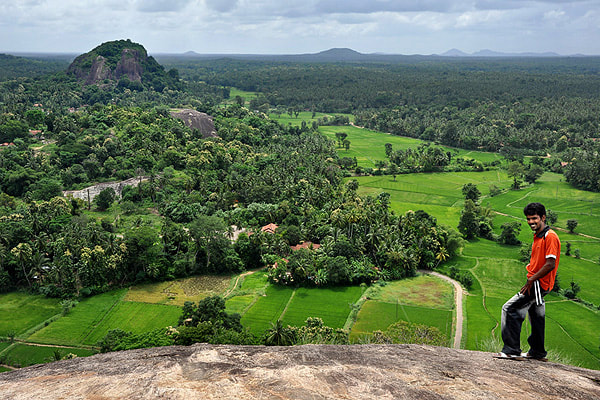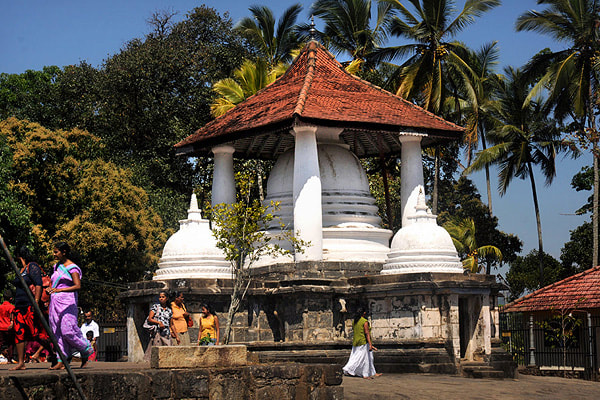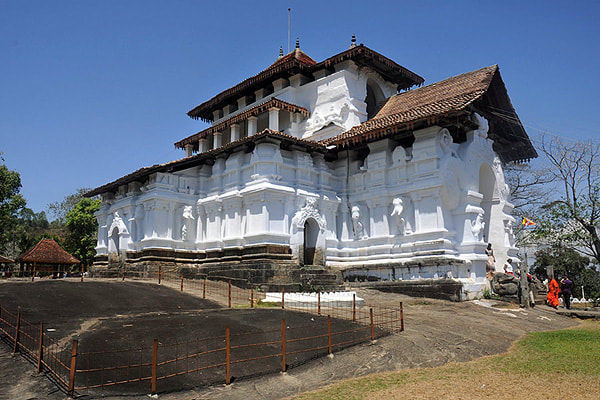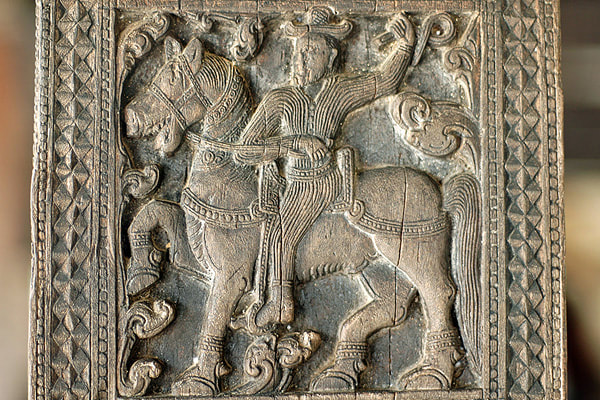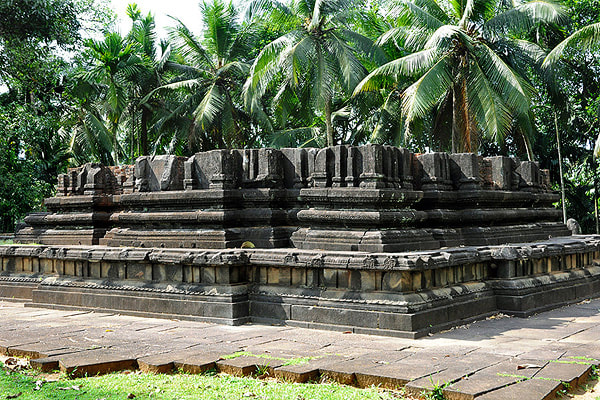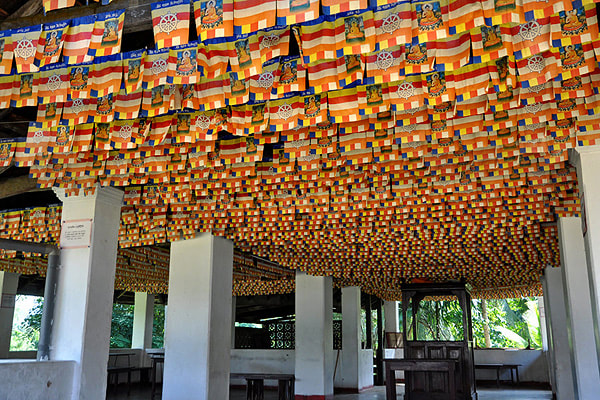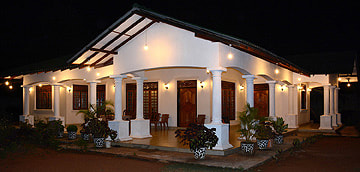The famous ruined city of Polonnaruwa has Sri Lanka's most significant temples and palaces from the high Middle Ages (12th century). In the 13th century the population and power center shifted to the west as a result of multiple factors, one being invasions in the north. The first new capital was Dambadeniya (between Negombo and Kurunegala). Traces of a palace can be seen on the fortified Dambadeniya Rock. The compound of the main temple of the Dambadeniya rock is found in 1 km distance from the rock. The temple that can be seen there today is mainly from the Kandyan period (17th/18th century), particularly the wooden hall and the murals, but it's a rather archaic double-storey building with stone pillars. If it's not the original structure from the 13th century any more, then it's nonetheless almost certainly formed in the same pattern as its medieval predecessor. In Yapahuwa, one of the succeeding capitals the most important surviving structures from the late 13th century are the magnificent stairway and the fortifications. In Kurunegala and Kotte, other capitals from the late medieval periods, only foundations have survived.
The only intact temple buildings from the Middle Ages are the three so-called Western Temples to the west and southwest of Kandy, namely Gadaladeniya, Lankatilaka and Embekke. Though refurbished in the Kandy period, the architecture is mainly from the Gampola period (second half of the 14th century). The three temples have in common that they integrate both Buddhist and Hindu places of worship. However, they differ much in their architectural pattern of executing this concept. Whereas Embekke is a Hindu shrine in the first place and has a Buddhist shrine in an auxiliary building to the side of the main shrine, it's the other way around in Gadaladeniya and Lankatilaka. There main chambers are Buddhist image houses. The ways to integrate Hindu places of worship found two different solutions. In Galdaladeniya the Hindu shrine is attached to the antechamber of the Buddhist image house on a vertical axis, so both places of worship are entered from the same front hall. In Lankatilaka, the Hindu gods are venerated in a kind of circumambulatory, which surrounds the central Buddhist image house on three sides within the same building. The surrounding isle with the Hindu chapels is entered from the west, whereas the Buddhist main temple is entered from the east. In this way, the two religions are more separated in a functional regard, but better integrated as an architectural whole in aesthetic terms, when compared to Gadaledeniya.
The only intact temple buildings from the Middle Ages are the three so-called Western Temples to the west and southwest of Kandy, namely Gadaladeniya, Lankatilaka and Embekke. Though refurbished in the Kandy period, the architecture is mainly from the Gampola period (second half of the 14th century). The three temples have in common that they integrate both Buddhist and Hindu places of worship. However, they differ much in their architectural pattern of executing this concept. Whereas Embekke is a Hindu shrine in the first place and has a Buddhist shrine in an auxiliary building to the side of the main shrine, it's the other way around in Gadaladeniya and Lankatilaka. There main chambers are Buddhist image houses. The ways to integrate Hindu places of worship found two different solutions. In Galdaladeniya the Hindu shrine is attached to the antechamber of the Buddhist image house on a vertical axis, so both places of worship are entered from the same front hall. In Lankatilaka, the Hindu gods are venerated in a kind of circumambulatory, which surrounds the central Buddhist image house on three sides within the same building. The surrounding isle with the Hindu chapels is entered from the west, whereas the Buddhist main temple is entered from the east. In this way, the two religions are more separated in a functional regard, but better integrated as an architectural whole in aesthetic terms, when compared to Gadaledeniya.
for opening a destination page in a new tab, please click the image
for going to the destination page in the same tab, please click the name in the text line below the image
for going to the destination page in the same tab, please click the name in the text line below the image

